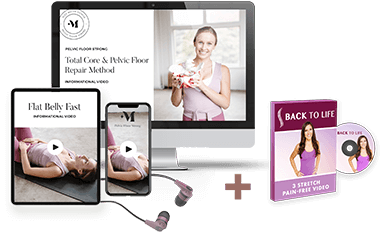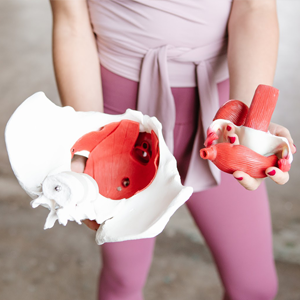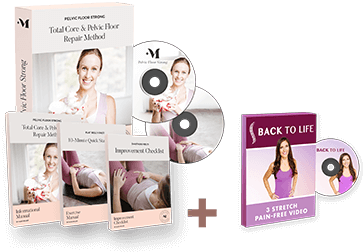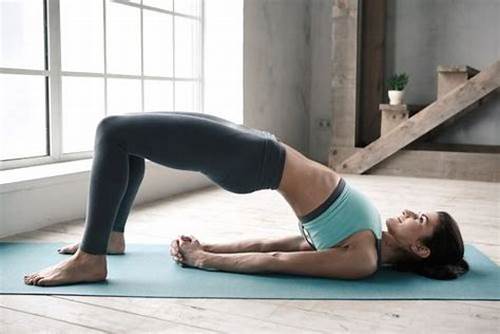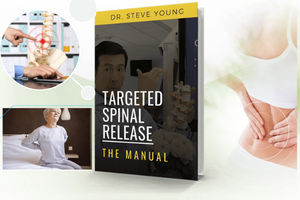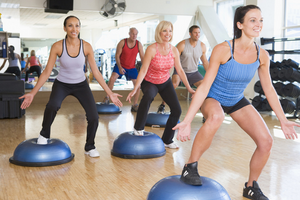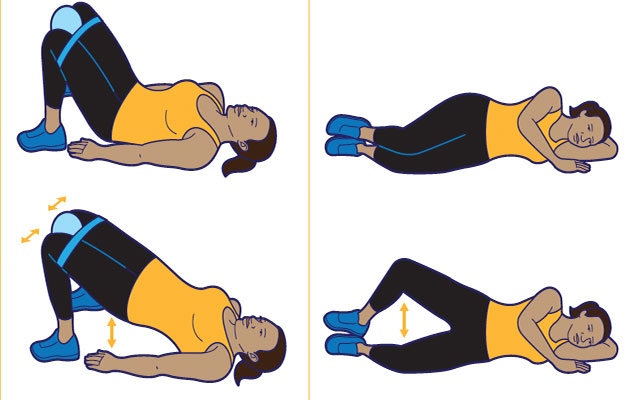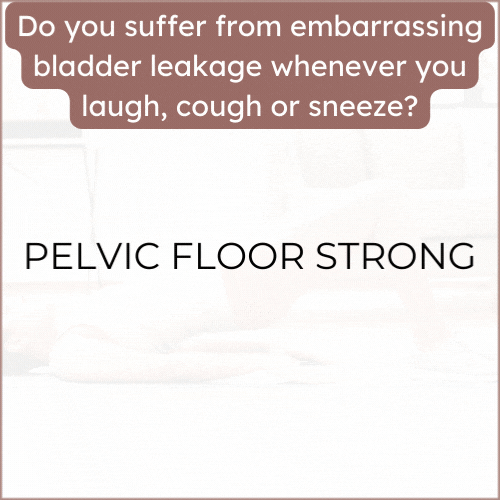Maximize Results with the Pelvic Floor Strong System by Alex Miller
1. Mastering Pelvic Floor Exercises (Kegels)
How to Perform Kegels Correctly and Progress:
- Starting Position: You can do Kegels sitting, lying down, or standing. Many people find it easier to start while lying down and progress to sitting and standing.
- Isolation of the Pelvic Floor: Make sure you’re only engaging the pelvic floor muscles. Avoid squeezing your thighs, buttocks, or abdomen, as this may take the focus away from the pelvic floor.
- Breathing: It’s crucial to combine Kegels with your breathing. Exhale as you engage the pelvic muscles, pulling them up and inward. Inhale as you relax the muscles completely.
- Progression: Over the first week, aim to increase your hold time from 5 seconds to 10 seconds as your muscles get stronger. Perform 3-4 sets of 10-15 reps daily.
Advanced Kegel Tips:
- Add variety by doing quick flicks: Contract the pelvic floor muscles quickly and then release. Do 10 fast contractions to build endurance and responsiveness.
- Try elevator Kegels: Imagine your pelvic floor as an elevator, slowly lifting from level 1 to level 5 (gradually contracting), holding at the top, and then slowly releasing down to level 1.
2. Enhancing Core and Pelvic Floor Synergy
- Pelvic Tilts: As part of Alex Miller’s system, pelvic tilts help strengthen the connection between your core and pelvic floor. Do these daily to reinforce that connection.
- Lie on your back with your knees bent and feet flat on the floor.
- Slowly tilt your pelvis upward, engaging your lower abs and pelvic floor.
- Hold the position for a few seconds before returning to neutral. Repeat 10-15 times.
- Bridge Pose: Continue doing bridges, but as you lift your hips, focus on squeezing your pelvic floor along with your glutes. Hold the position for 5-10 seconds, and repeat 10-15 times.
Progression:
- After mastering basic movements, you can add more dynamic exercises, like a single-leg bridge or squats, while engaging your pelvic floor. This adds intensity and further strengthens the muscles.
3. Bladder Training to Accelerate Results
Effective Bladder Training Tips:
- Track Your Patterns: Use a bladder diary for 3-4 days to note how often you urinate, when you experience leakage, and what you were doing at the time (coughing, sneezing, exercising, etc.).
- Gradual Time Extension: Once you know your current bladder habits, extend the time between bathroom visits by 15-30 minutes every 2-3 days. For example, if you’re currently going every hour, aim to wait 1 hour and 15 minutes, then gradually increase.
- Urgency Management: When you feel the urge to go, try using Kegels to hold off the urge for a few minutes before heading to the bathroom. This helps retrain the bladder and reduce urgency.
4. Proper Breathing and Posture
- Diaphragmatic Breathing: This is key to reducing pressure on the pelvic floor and improving bladder control. Practice this daily:
- Sit or lie down in a comfortable position.
- Place one hand on your chest and the other on your abdomen.
- Breathe in deeply through your nose, allowing your abdomen to rise as your diaphragm lowers.
- Exhale slowly through your mouth, feeling your abdomen fall while gently engaging your pelvic floor.
- Breathing with Exercises: Make diaphragmatic breathing part of your exercise routine. Always engage the pelvic floor on the exhale to protect and strengthen it during movements like squats or bridges.
5. Functional Movements to Boost Everyday Control
- Bodyweight Squats: Incorporate squats into your daily routine, as they are excellent for engaging the pelvic floor and core.
- Stand with your feet shoulder-width apart.
- As you squat down, focus on maintaining neutral posture, tightening your core, and lifting your pelvic floor.
- Rise back to standing while maintaining control of your pelvic floor.
- Aim for 2-3 sets of 10-15 squats daily.
Incorporate Pelvic Floor Engagement Throughout the Day:
- Engage your pelvic floor during routine activities like standing up, lifting, or even sitting down. This helps train your muscles to work automatically in daily life.
6. Lifestyle Enhancements for Fast Results
Dietary Changes:
- Bladder-Friendly Diet: Avoid bladder irritants such as caffeine, spicy foods, acidic foods (like citrus), and artificial sweeteners, which can aggravate incontinence.
- Stay Hydrated: Drink enough water to avoid dehydration, but space your fluid intake throughout the day. Drink less in the evening to reduce nighttime trips to the bathroom.
- High-Fiber Diet: Prevent constipation, which adds pressure to the pelvic floor, by incorporating fiber-rich foods like fruits, vegetables, and whole grains.
Maintain a Healthy Weight:
- Even a small amount of weight loss can reduce pressure on the pelvic floor and improve symptoms of urinary incontinence. Incorporate regular, low-impact physical activity such as walking, swimming, or yoga to manage weight.
7. Using the Pelvic Floor Strong System Long-Term
- 7 Days as a Foundation: While you’ll likely notice improvements after 7 days, continuing the program beyond the first week is crucial. After this period, keep progressing by increasing the intensity of your exercises, adding variations, and continuing bladder training.
- Ongoing Strengthening: Stick with daily Kegels and core exercises. You can incorporate more advanced movements such as planks and lunges, which further challenge the pelvic floor.
8. Tracking Progress and Adjusting as Needed
- Track Symptoms: Keep a journal to note changes in your incontinence symptoms, such as fewer leakage incidents, better bladder control, or longer time between bathroom visits.
- Reassess Regularly: Every few weeks, reassess your progress and adjust your routine as needed. If certain exercises are getting easier, increase the difficulty or duration to keep challenging your muscles.
Quick Checklist for the First Week:
- Day 1-2: Begin Kegels, diaphragmatic breathing, and bladder training.
- Day 3-4: Add core and functional exercises (pelvic tilts, bridge pose, squats).
- Day 5-6: Increase Kegel hold time and work on progressive bladder control.
- Day 7: Consolidate gains, track progress, and continue with lifestyle adjustments.
By consistently following these steps, you’ll see significant improvement in urinary incontinence and pelvic floor strength within the first 7 days, with continued benefits as you maintain and progress in the program.




